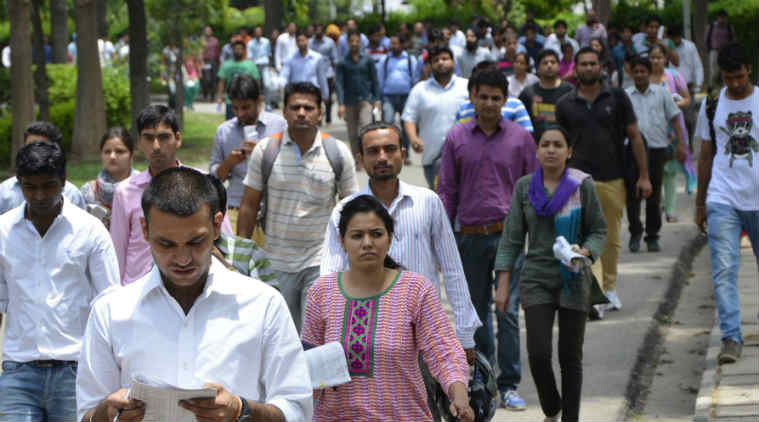
World Population Day is celebrated every year on July 11 to draw attention to the global population problems and the importance of addressing population challenges for sustainable development. The day aims to raise awareness about the various aspects of population growth, including its implications for social, economic and environmental well-being. K.C. Zakaria, Senior Population Research Officer (Demographer) at the World Bank, suggested this day on July 11, 1987, when the world population reached almost five billion. This year, 2025, the call for World Population Day is “Empowering youth to create the families they want in a just and promising world”.
That is, it calls for ensuring that young people have the rights, tools and opportunities to shape their future. According to the World Population Clock, the world will have 8.2 billion people as of January 1, 2025. Our planet is in danger of overpopulation. We need to control population and protect the planet. The five most populous countries in the world are India (1,463,865,525), China (1,416,096,094), the United States (347,275,807. ), Indonesia (285,721,236) and Pakistan (255,219,554). The least populous countries in the world are Vatican City, Monaco, Gibraltar, etc., with populations in the thousands.
Human resources, like natural resources, are of great importance in the economic development of a country. They contribute to productivity by converting natural resources into usable goods. Investment in human capital means investment in education, training, healthcare and so on. Human development is the process of increasing the knowledge, skills and abilities of all the people in a society. Countries with highly skilled human resources are Japan, South Korea, China, Germany and the United States. They have become developed countries with skilled human resources. Therefore, any country needs to improve its human capital.
India has become the most populous country in the world. According to Robert Malthus’ theory, India is facing the second stage, where the birth rate is high. The death rate is low. 62.5% of India’s population is in the age group of 15-59 years, which will reach a peak of approximately 65% by 2036. These demographic trends will continue to provide a demographic dividend (profit) till 2055-56. According to the Economic Survey 2018-19, India’s demographic dividend will reach its peak by 2041. At that time, the working age share, i.e. 20-59 years, of the population It is expected to reach 59%. India has one of the world’s least ageing populations. As of 2020, the median age in India was just 28 years. It is 37 in China, the US, 45 in Western Europe and 49 in Japan. A study on the demographic dividend in India by the United Nations Population Fund (UNFPA) has revealed two interesting things.
The demographic dividend opportunities in India are greater than any other country in the world. With over 65% of the working age population, India is poised to emerge as an economic superpower. India will supply more than half of Asia’s workforce in the coming decades. This demographic dividend will be available at different times in different states due to the differential behavior of population trends. Therefore, India should give more priority to developing the skills of its people. In the 2025 Human Development Report (HDI), India is ranked 130th out of 193 countries. This ranking reflects India’s progress in human development. The HDI value has increased from 0.676 in 2022 to 0.676 in 2022. It increased to 0.685 in 2023. This report, released by the United Nations Development Programme (UNDP), categorizes India as a medium human development country.
When we look at the challenges facing India, the increase in the working-age ratio is concentrated in some of the poorest states in India. The demographic dividend can only be fully realised if India can create gainful employment opportunities for this population. The lack of skill in the Indian workforce is a major challenge. Many of the new jobs that will be created in the future will be highly skilled. India may not be able to capitalise on the opportunities due to low human capital and skills shortages. Therefore, health and education opportunities need to be significantly improved to make the Indian workforce effectively skilled. The nature of the Indian economy is another obstacle to India reaping the benefits of demographic transformation.
There is growing concern that future growth will turn into unemployment due to industrialisation, globalisation, the Fourth Industrial Revolution and technological advancements. With nearly 41% of the population under the age of 20, India can only reap the demographic dividend with a better education system. Improvements in healthcare, infrastructure and other infrastructure will ensure a greater number of productive days for the young workforce, thereby increasing the productivity of the economy. Business interests and encouraging entrepreneurship will help in job creation to provide employment to a large workforce. India’s improved rank of 63 in the World Bank’s Ease of Doing Business Index is a good sign. Schemes like Start-up India and Make in India, if implemented properly, will deliver the desired results in the near future.
There is a need to invest in healthcare, quality education, jobs and skills to improve the skills of the country’s human resources, which will help in building human capital. This will contribute to economic growth and help end extreme poverty. Skill development programmes should be increased to provide employment to the youth of India. For this, the government has established the National Skill Development Corporation (NSDC) with the objective of upskilling 500 million people in India. The National Skill Development Corporation (NSDC) has made significant progress in enhancing India’s skill development landscape.
NSDC has trained lakhs of people, facilitated industry partnerships and set up Sector Skill Councils to align training with industry needs. It has also played a key role in promoting international skill mobility and green jobs. It has trained over 40.3 million candidates. It has secured 9.4 million placements. It has established 21 Future Skills Centres (FSCs) in higher education institutions. So far, about 1.37 crore people have been skilled and prepared for jobs through Pradhan Mantri Kaushal Vikas Yojana (PMKVY). So far, more than 720 Pradhan Mantri Kaushal Kendras (PMKKs) have been established to support skill development infrastructure in the country.
When we look at the challenges facing India, the increase in the working-age ratio is concentrated in some of the poorest states in India. The lack of skill in the Indian workforce is a major challenge. Many of the new jobs that will be created in the future will be highly skilled. India may not be able to capitalize on the opportunities due to low human capital and skills shortage. Therefore, health and education opportunities need to be significantly improved to make the Indian workforce effectively skilled. The nature of the Indian economy is another obstacle to reaping the benefits of demographic transition in India.
There is a growing concern that future growth will turn into unemployment due to industrialization, globalization, and the Fourth Industrial Revolution technological advancements. With nearly 41% of the population under the age of 20, India, with a better education system, healthcare, infrastructure development, and a young workforce, will boost the productivity of the economy. Businesses’ interests and promotion of entrepreneurship will help in job creation to provide employment to the large workforce. India’s improved rank of 63 in the World Bank’s Ease of Doing Business Index is a good sign. Schemes like Start-up India and Make in India, if properly implemented, will deliver the desired results in the near future.
If policymakers align development policies with this demographic shift, it presents a golden opportunity for accelerated socio-economic development. This demographic transition also brings with it complex challenges. If the increased workforce does not provide gainful employment for the adequately skilled and educated, we face a demographic catastrophe. Learning from countries like Japan and Korea, by designing solutions that take into account domestic complexities, we will be able to reap the benefits of the demographic dividend.











